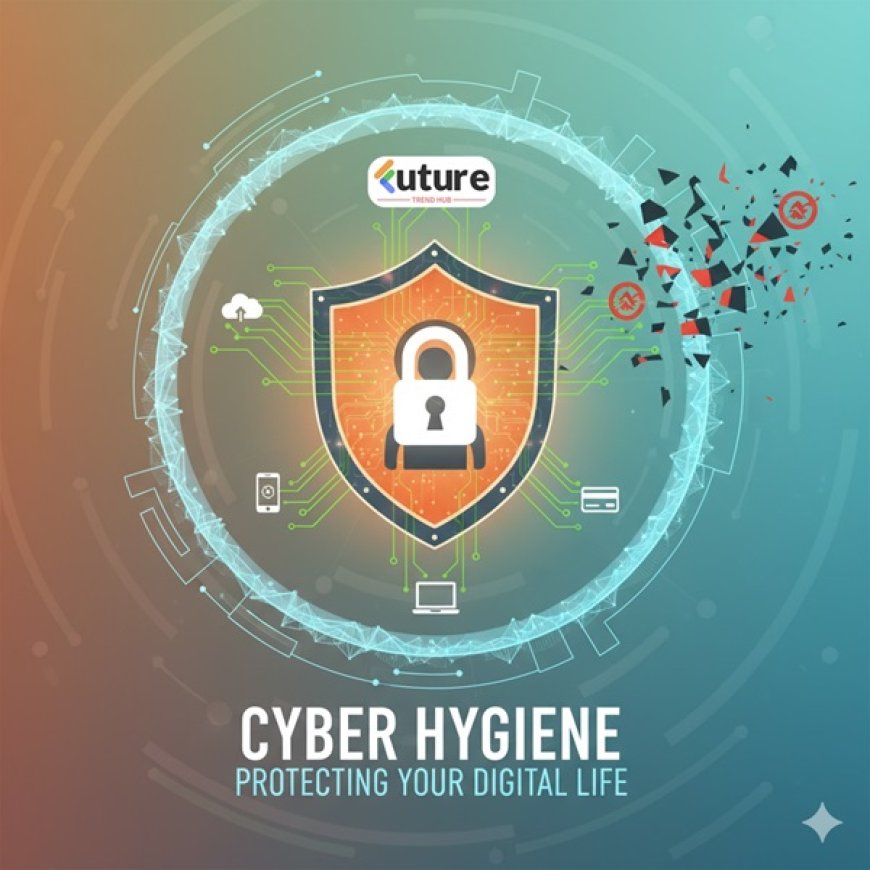The Role of Cyber Hygiene in Protecting Your Digital Life
In today’s digital-first world, your personal and professional activities are closely tied to online platforms. From banking apps and social media to cloud storage and work collaboration tools, almost every aspect of life has a digital footprint. This convenience, however, comes with a heightened risk of cyberattacks. Practicing cyber hygiene is one of the most effective ways to safeguard your data, identity, and privacy.

What is Cyber Hygiene?
Cyber hygiene refers to the regular practices and habits that individuals and organizations follow to maintain digital security. Just like brushing your teeth prevents cavities, proper cyber hygiene prevents security breaches and data theft. It focuses on simple, proactive measures that reduce risks from cybercriminals.
Why Cyber Hygiene Matters
Cyberattacks are no longer limited to big corporations. Hackers often target individuals because personal devices and accounts are less protected. According to recent reports, phishing attacks and identity theft are rising worldwide. Poor cyber hygiene—such as weak passwords, ignoring software updates, or careless clicking—makes you an easy target. Practicing good cyber hygiene ensures:
-
Protection of sensitive data (like bank details, medical records, and personal photos)
-
Lower risk of identity theft
-
Safe browsing and online shopping experiences
-
Stronger defense against malware and ransomware
Essential Cyber Hygiene Practices
1. Use Strong and Unique Passwords
Create complex passwords with a mix of letters, numbers, and symbols. Avoid using the same password across multiple accounts. A password manager can help you securely store and generate unique credentials.
2. Enable Multi-Factor Authentication (MFA)
MFA adds an extra layer of security by requiring more than just a password—such as a text code or biometric scan. Even if a hacker steals your password, MFA makes unauthorized access much harder.
3. Regularly Update Software and Devices
Outdated apps and operating systems often contain security loopholes. Enable automatic updates on your devices to patch vulnerabilities before hackers exploit them.
4. Be Wary of Suspicious Links and Emails
Phishing remains one of the most common cyber threats. Always verify the source before clicking links or downloading attachments. If something feels “too good to be true,” it usually is.
5. Backup Your Data Frequently
Cyberattacks like ransomware can lock or delete files. Keep backups on secure cloud storage or external drives to ensure your data is never permanently lost.
6. Secure Your Wi-Fi Network
Use strong encryption (like WPA3) and avoid using public Wi-Fi for sensitive transactions. If necessary, use a VPN for safer browsing.
7. Monitor Accounts and Devices
Regularly check your bank statements, credit reports, and login histories. Early detection of suspicious activity can help minimize damage.
Cyber Hygiene for Businesses
Organizations must adopt cyber hygiene policies for employees. Regular training, endpoint security, and access control are essential. A single employee’s mistake—like clicking a phishing link—can compromise the entire network. Businesses that promote cyber hygiene not only protect themselves but also build trust with customers.
Final Thoughts
Cyber hygiene is not a one-time activity; it’s an ongoing process. By following consistent practices like updating devices, using strong passwords, and staying alert against scams, you can significantly reduce your chances of falling victim to cyberattacks.
In a world where digital threats are evolving daily, cyber hygiene is your first and most reliable line of defense. Start today—because protecting your digital life is just as important as protecting your physical one.







